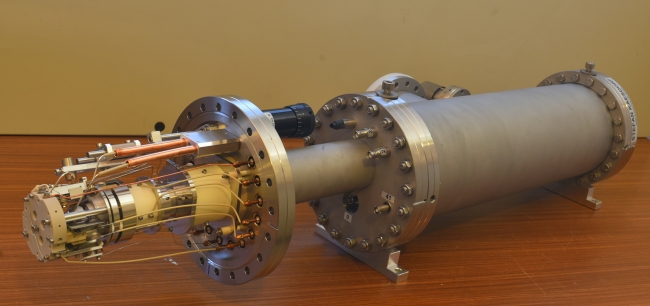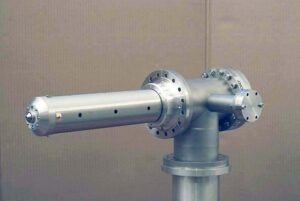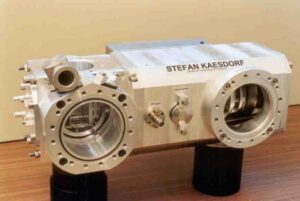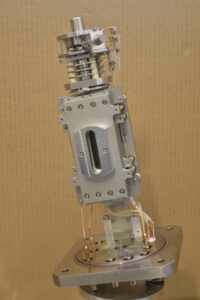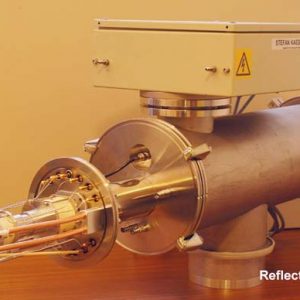Products from Photonion
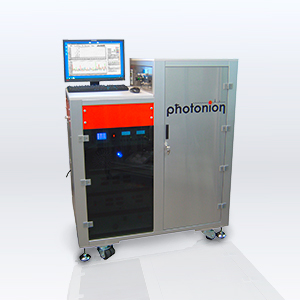
PHOTO-TOF-MS
CUSTOMIZED GAS ANALYZER
Fast on-site analysis of compounds by soft ionization (VUV) mass spectrometry
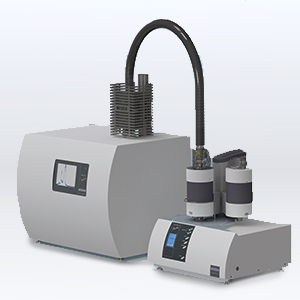
TG-PIMS
THERMOGRAVIMETRY - PHOTOIONIZATION
MASS SPECTROMETRY
Decomposition of polymers
Characterization of crude oil
Characterization of tobacco and coffee
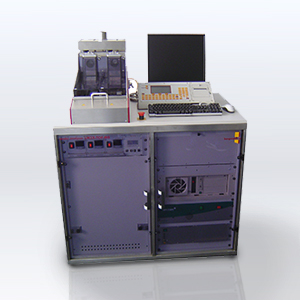
SMOKE TOF-MS
SMOKE ANALYZER
On-line analysis of toxic gases in cigarette smoke
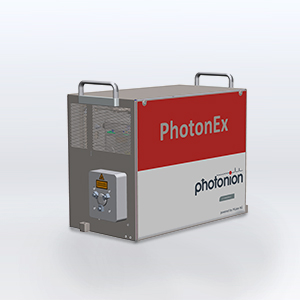
PHOTONEX
POWERFUL EXCIMER LASER IONIZATION SOURCE
Gas and particle analysis with the focus on polycyclic aromatic hydrocarbons (PAH), inorganic-compounds and PAH
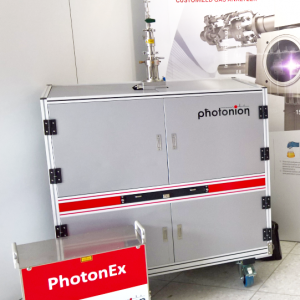
PHOTONLIZA
LASER IONIZATION AEROSOL MASS SPECTROMETER
Single-particle deep profiling by advanced laser ionization MS
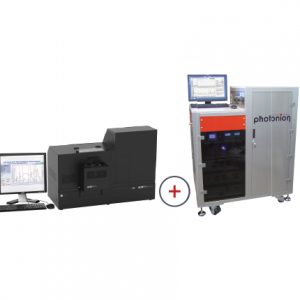
EC/OC-PHOTO-MS
AMBIENT AEROSOL FILTER PAD ANALYZER
Thermal-optical multi-wavelength carbon analyser photo-ionisation tof-ms for chemical speciation of particles
TOF-mass Spectrometers for Research by Kaesdorf
Our standard model RFT10 time-of-flight mass spectrometer is an extremely versatile instrument which is used in many different areas of research.
Decomposition of polymers
Characterization of crude oil
Characterization of tobacco and coffee
RFT50 time-of-flight mass spectrometer is optimized for mass analysis of ions with mass > 100 000 amu.

EC/OC-PHOTO-MS
AMBIENT AEROSOL FILTER PAD ANALYZER
Thermal-optical multi-wavelength carbon analyser photo-ionisation tof-ms for chemical speciation of particles
PHOTONEX
Gas analysis with the focus on polycyclic aromatic hydrocarbons (PAH)
- coffee roasting
- industrial combustion
- process control
Particle analysis with the focus on inorganic- and PAH- compounds
- ship exhaust
- wood stove exhaust
- car exhaust
Wavelength (nm): 193 (ArF) / 248nm (KrF)
Max. Repetition Rate: 200Hz up to kHz
Stabilized Pulse Energy: 6* mJ
Stabilized Pulse Power: 1.2* W
Energy Stability (sigma): 2*%
Beam Dimensions (FWHM, V x H mm): 6 x 3*
Beam Divergence (FWHM, V x H mrad): 2 x 1*
Pulse Duration (FWHM): 5 to10* ns
Weight: app. 75 kg
Cooling: air/water**
Electrical: 230 V, 50/60 Hz, 2000 W
Dimensions (LxWxH): 594x315x496 mm***
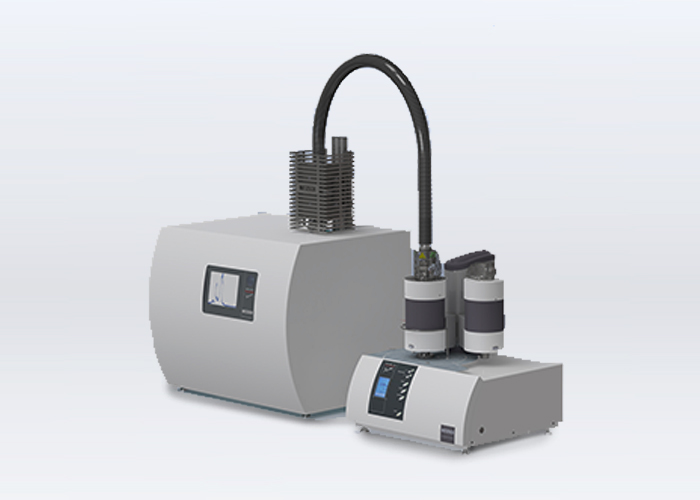
TG-PIMS
- Thermal analysis and characterization
of evolving gases by
soft ionization mass spectrometry
mass range: 10-600 Th
mass resolving power: 900 Th/Th FWHM *
mass accuracy: 100 mTh
extraction rate: up to 80 kHz
spectra rate: 10 Hz
ionization: EI, SPI, EI/SPI
Quad Filter: low cut-off
dynamic range: 10^6
gas flow into ion source: 1 std ml/min = 1 sccm
matrix gas: He, N2, Ar also air or O2
ion rate: 1000 ions/extraction
different VUV sources: for different energies
DECOMPOSITION OF POLYMERES
Polystyrene (PS): The SPI mass spectrum shows that in addition to the dominating
styrene monomer peak at 104 m/z, also the styrene dimer (208 m/z) and styrene trimer (312 m/z) are formed. Due to the resonance stabilization of the styrene monomer the alkane backbone of the PS polymer readily is breaking after every second chain carbon, forming predominately styrene (C2-phenyl unit). However, the occurrence of toluene (C1-phenyl unit), phenyl propene (C3-phenyl unit) and phenyl butadiene (C4-phenyl unit) shows that other chain braking positions are possible, although less probable.
Acronitrile-Butadiene-Styrene (ABS): The most dominant species in the evolved gas phase SPI mass spectrum is styrene (104 m/z) surrounded by the C1 and C3-benzene products from the polymer chain degradation (toluene and propenyl benzene). At 157 m/z the condensation product of acrylonitrile and styrene is visible and at 208 m/z the styrene dimer can be seen in the SPI mass spectrum.
CHARACTERIZATION OF CRUDE OIL
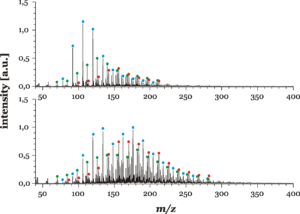
Crude oils are often characterized according to their physical properties such as density, viscosity, color, and odor. Furthermore, they may be distinguished by determining their chemical composition on a molecular level, which is challenging due to the enormous number of components present in the oils. In the displayed mass spectra alkanes (linear and branched), cycloalkanes and substituted benzenes occur in long homologous series and are assigned by the different colored dots red, green and blue, respectively. The SPI mass spectra from thermal analysis of different crude oils clearly show the advantage of soft photo ionization for the characterization of the evolving gases. Since fragmentation does not occur, each hydrocarbon may be identified according to its molecular peak. Different crude oils can be easily identified and characterized based on their distinct molecular patterns of the released compounds.
The thermogravimetry SPI-MS setup consists of a thermobalance which is coupled to an oaTOF mass spectrometer. The coupling is carried out via a heated capillary, which transfers the gas molecules evolving in the thermobalance into the ion source. There, the molecules are ionized either by VUV photons or by 70eV-electrons in case of conventional EI.
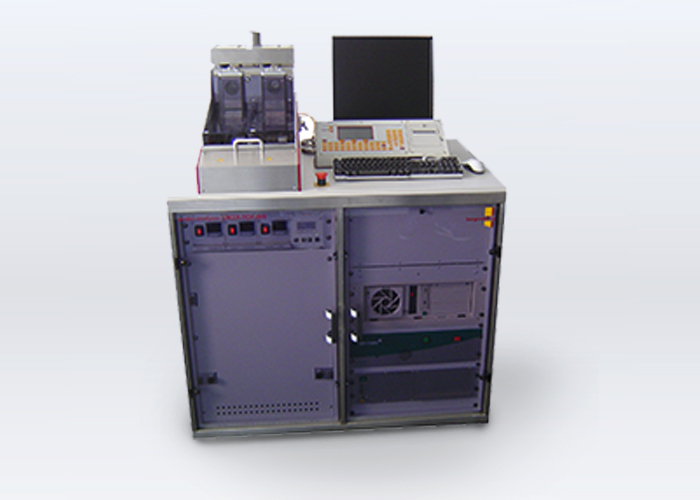
Smoke from the cigarette filter holder is sampled continuously with the Photo-TOFMS mass spectrometry sys-tem at a flow rate of ~2mL/s. Various relevant species in the cigarette mainstream smoke are ionized by a special VUV-light source. After this unique soft photo ionization the for-med ions are accelerated into the time-of-flight mass ana-lyzer where they are separated due to their different mass to charge ratios. A typical mass spectrum of tobacco can be generated in ~10µs. A puff-resolved, on-line recording of the concentrations of several compounds thus is possi-ble. Parameters for ISO as well as intense (Massachusetts, Canada) smoking conditions can be applied. Furthermore, „human smoking“ profiles can be replicated by the smoking machine.
Smoking Machine:
CONFIGURATION:
- 19“-module rack
- Two syringes
- Syringe controller
- Microprocessor
- controller Stepper motor
- controller
LENGHTS OF CIGARETTE SAMPLES: 60-120mm
DIAMETER OF CIGARETTE SAMPLES: 4.5 to 9 mm
TOTAL DIMENSIONS (WXDXH): 1130x800x1250 mm
POWER SUPPLY: 100-230V, 50/60Hz
PUFF VOLUME: 5-100 mL in 1s, 5-150mL in 2s
PUFF DURATION: 1 – 9.9 sec.
PUFF SHAPE: Programmable (ISO, Intense, human smoking profile replication)
INTERFACE: 1xRS232
Photo-TOF Smoke Analyzer:
SPECIAL INLET SYSTEM:
- Deactivated transfer line
- Whole smoke and gas phase measurements
- Special heated MS inlet needle
- Heated up to 250°C (Transfer line, Interface and Inlet)
VUV-PHOTO IONIZATION LIGHT SOURCE:
- High energy 10.78 eV
TOF-MASS ANALYZER:
- Mass range: 1 – 600 Th (m/z)
- Mass resolution: m/Δm = 700
- Dynamic range: 106
Mass accuracy: 100 ppm - Detection limit (Benzene): 100 ppb
- Maximal primary data acquisition rate: 100kHz
- Acquisition hardware:
On-board mass spectra accumulation - Soft SPI ionization mode (standard) and hard electron ionization mode (EI, 70 eV)
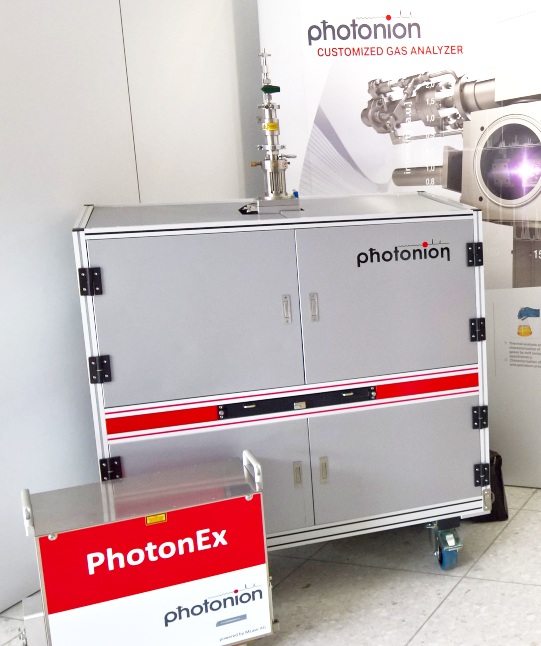
PHOTONLIZA
- Atmospheric monitoring
- source apportionment of aerosols (e.g. power plants, industrial combustion, engine exhaust)
- Long-Range surveillance of ship emissions
- Safety and health relevant aerosols
- Enhanced trace detection of transition metals
- Process monitoring
The system acquires bipolar mass spectra and the size from individual particles. Tailored laser pulses feature resonance-enhanced ionization of both aromatic hydrocarbons and transition metals1. Also single-, ultra-fine particles can be analyzed by combining a new optical design, ultra high-repetition lasers and a modulated ion transmission.
for bipolar Laser Desorption/ Ionization (LDI) single particle mass spectrometry
- Standard particle size range 180 – 2500 nm (other options on request)
- Special 248 nm (KrF) or 193 nm (ArF) PhotonEX excimer laser
- Bipolar Reflectron TOF-MS co-developed by HEXIN, mass range 10…2000 m/z, resolution ~1500 m/Δm
- Dynamic range >105
- Inlet flow volume 100 std. mL/min
- Up to 100Hz mass spectral sampling rate
- Data acquisition software included
Multi-step-laser excitation for add-on Polycyclic Aromatic Hydrocarbon detection
- Patented back-reflection/multistep laser excitation for additional detection of toxic Polycyclic Aromatic Hydrocarbons (PAH, requires 248 nm PhotonEX excimer laser)
- Additional CO2-desorption laser
- Unique single particle detection of aromatic molecules (PAH) combined with bipolar LDI
- Modulated ion transmission for enhanced dynamic range >10
(Ultra Fine Particle detection)
- Size range 30-2500 nm, freerunning below 200 nm
- 1 kHz free running rate at 248 nm or 193 nm
- Patented multiplexing of active and free triggering for simultaneous UFP and standard particle size modes
- Data reduction acquisition mode
Detection of transient signals, e.g. from ships
- Aerosol enrichment unit
- 1 kHz spectra sampling rate, 248 nm
- Automated switching to highrepetition mode for specified events
- AIS receiver/tracker and air trajectory modelling package
- Optical Parametric Oscillator for 210…2400 nm
- 10 Hz spectra sampling rate
- Patented, active triggering system
(Cell exposure dose monitoring)
- In conjunction with Vitrocell Exposure StationTM Air-Liquid Interface cell exposure technology
- Monitors particles at the cell deposition position
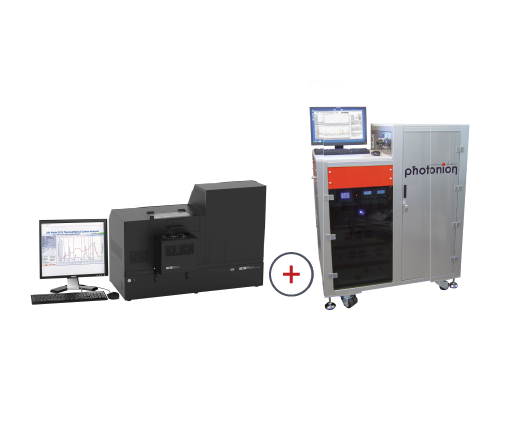
EC/OC-PHOTO-MS
Analysis of ambient particulate matter (PM) from quartz fibre filters
Applications:
- ship exhaust
- Wood stove exhaust
- car exhaust
A hyphenation of AEROSOL’S DRI 2015 Series 2
MULTI-WAVELENGTH CARBON ANALYSER to PHOTONION’S PHOTO-TOF-MS. The carbon analyzer provides the bulk properties of particle-bound carbon (TC=EC+OC). The PI-TOF-MS enables chemical speciation of particle-bound organic compounds.
Analysis of ambient particulate matter (PM) from quartz fibre filters.
The amount of carbon and volatilized PM constituents can be qualified and classified. Analysis of PM constituents from
- marine engine
- wood stove
- gasoline engine
